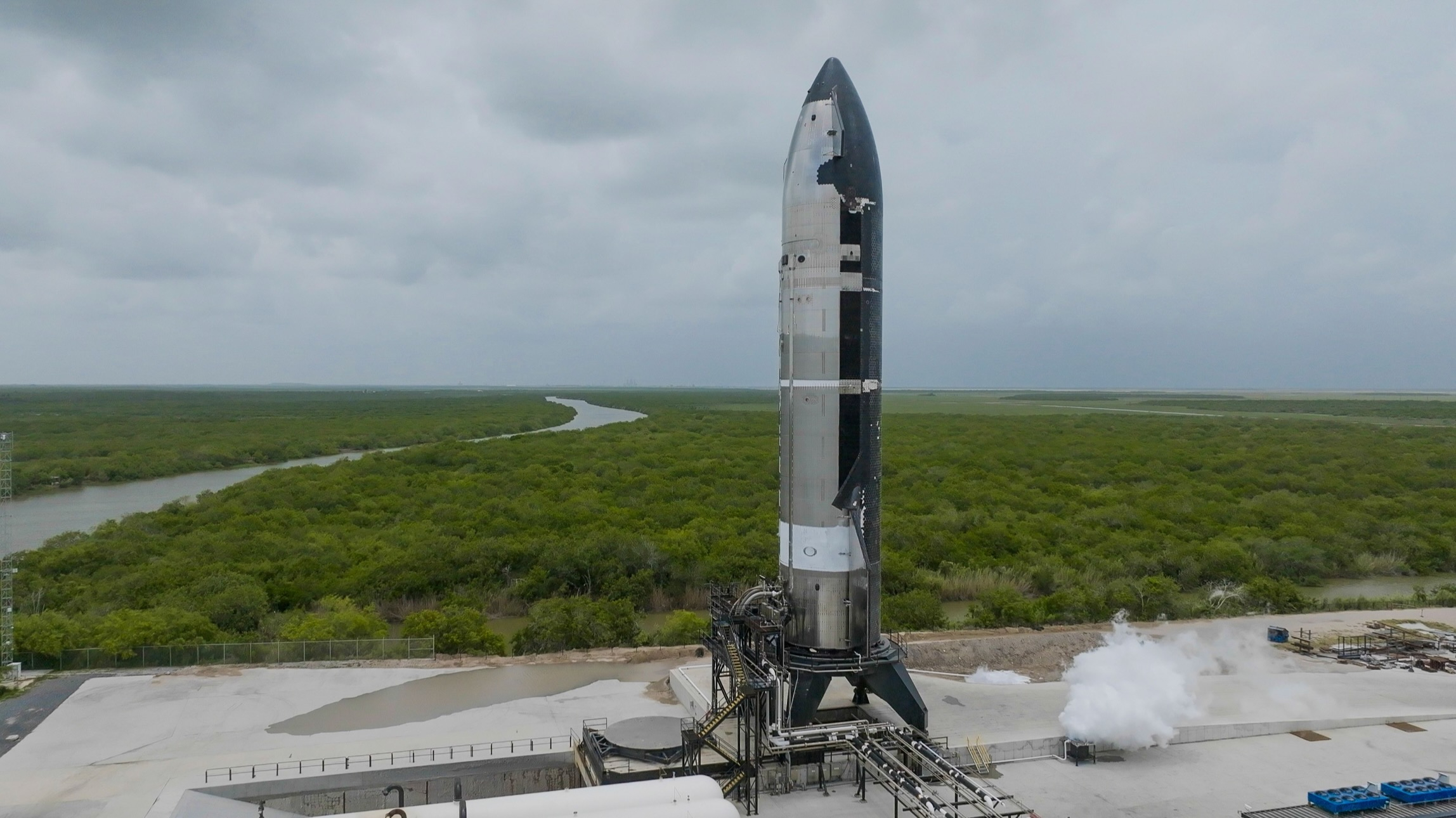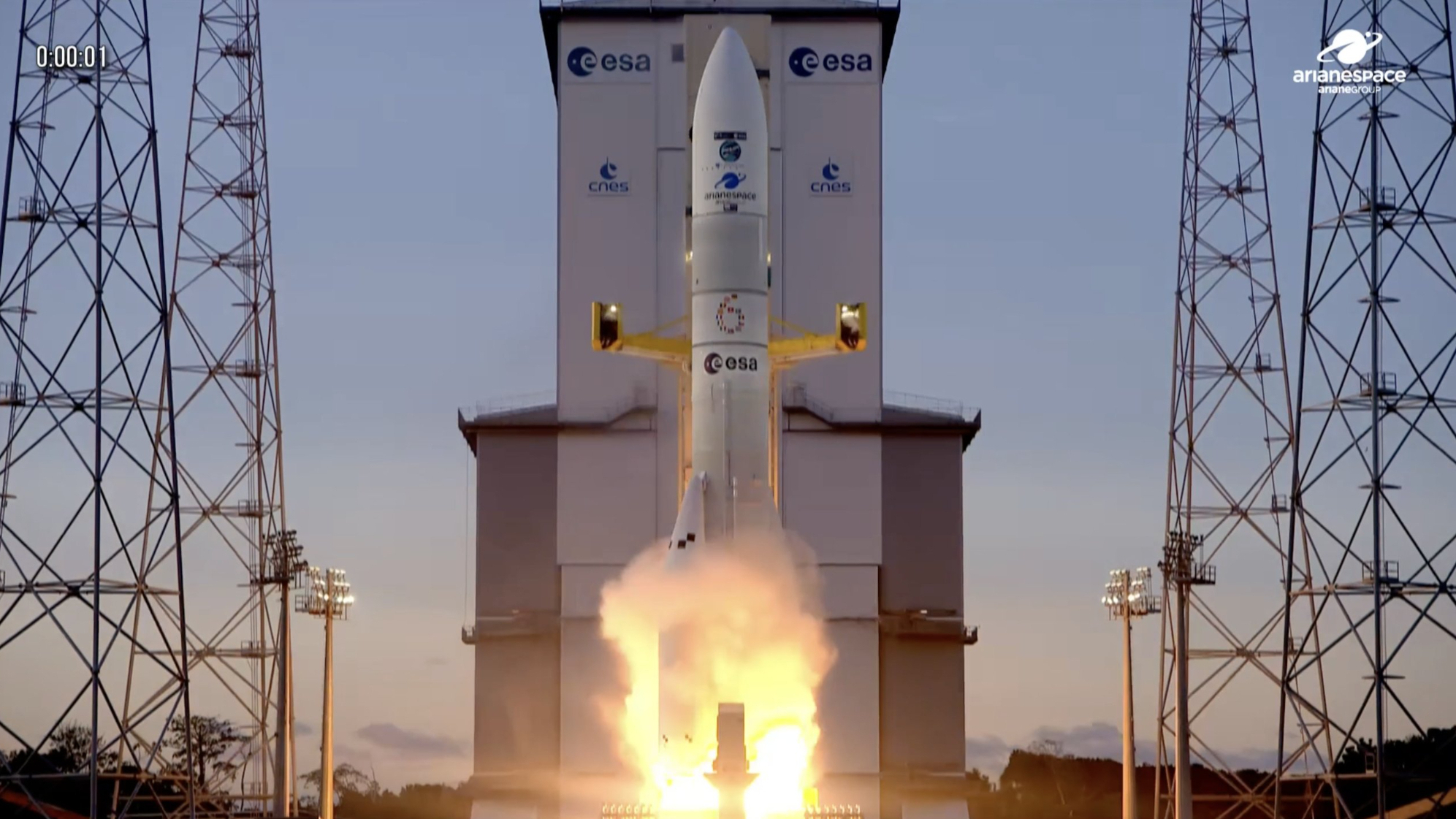SpaceX traces Starship test-stand explosion to failure of pressurized nitrogen tank

SpaceX thinks it knows why its newest Starship spacecraft went boom this week.
The 171-foot-tall (52-meter-tall) vehicle exploded on a test stand at SpaceX's Starbase site late Wednesday night (June 18) as the company was preparing to ignite its six Raptor engines in a "static fire" trial.
A day later, SpaceX narrowed in on a likely cause.
ANOMALY! Just before Ship 36 was set to Static Fire, it blew up at SpaceX Masseys!Live on X and YT:https://t.co/GPjZIX1Zyd pic.twitter.com/CfZhDeSGaeJune 19, 2025
"Initial analysis indicates the potential failure of a pressurized tank known as a COPV, or composite overwrapped pressure vessel, containing gaseous nitrogen in Starship's nosecone area, but the full data review is ongoing," the company wrote in an update on Thursday (June 19).
"There is no commonality between the COPVs used on Starship and SpaceX's Falcon rockets," the company added. So, launches of the workhorse Falcon 9, which has already flown 75 times in 2025, should not be affected.
The Starship explosion did not cause any reported injuries; all SpaceX personnel at Starbase are safe, according to the update. People living around the site, which is near the border city of Brownsville, shouldn't be worried about contamination from the incident, SpaceX said.
"Previous independent tests conducted on materials inside Starship, including toxicity analyses, confirm they pose no chemical, biological, or toxicological risks," the company wrote. "SpaceX is coordinating with local, state, and federal agencies, as appropriate, on matters concerning environmental and safety impacts."
Breaking space news, the latest updates on rocket launches, skywatching events and more!
That said, the explosion did damage the area around the test stand, which is at Starbase's Massey site (not the orbital launch mount area, from which Starship lifts off).
"The explosion ignited several fires at the test site which remains clear of personnel and will be assessed once it has been determined to be safe to approach," SpaceX wrote in the update. "Individuals should not attempt to approach the area while safing operations continue."
Wednesday night's explosion occurred during preparations for Starship's 10th flight test, which SpaceX had hoped to launch by the end of the month. (Static fires are common prelaunch tests, performed to ensure that engines are ready to fly.) That timeline will now shift to the right, though it's not clear at the moment by how much.
The incident was the latest in a series of setbacks for Starship upper stages. SpaceX lost the vehicle — also known as Ship — on the last three Starship flight tests, which launched in January, March and May of this year.
Starship's first stage, called Super Heavy, has a better track record of late. For example, on Flight 7 and Flight 8, the huge booster successfully returned to Starbase, where it was caught by the launch tower's "chopstick" arms as planned.

Michael Wall is a Senior Space Writer with Space.com and joined the team in 2010. He primarily covers exoplanets, spaceflight and military space, but has been known to dabble in the space art beat. His book about the search for alien life, "Out There," was published on Nov. 13, 2018. Before becoming a science writer, Michael worked as a herpetologist and wildlife biologist. He has a Ph.D. in evolutionary biology from the University of Sydney, Australia, a bachelor's degree from the University of Arizona, and a graduate certificate in science writing from the University of California, Santa Cruz. To find out what his latest project is, you can follow Michael on Twitter.
You must confirm your public display name before commenting
Please logout and then login again, you will then be prompted to enter your display name.
